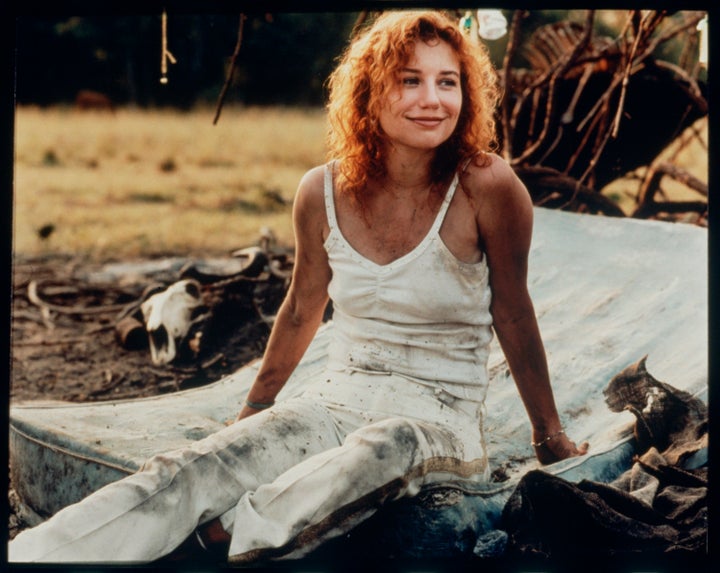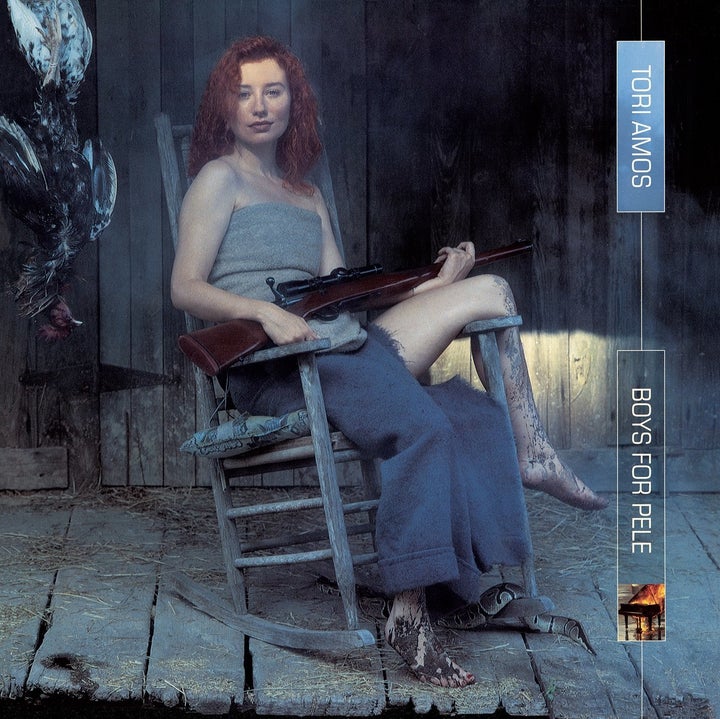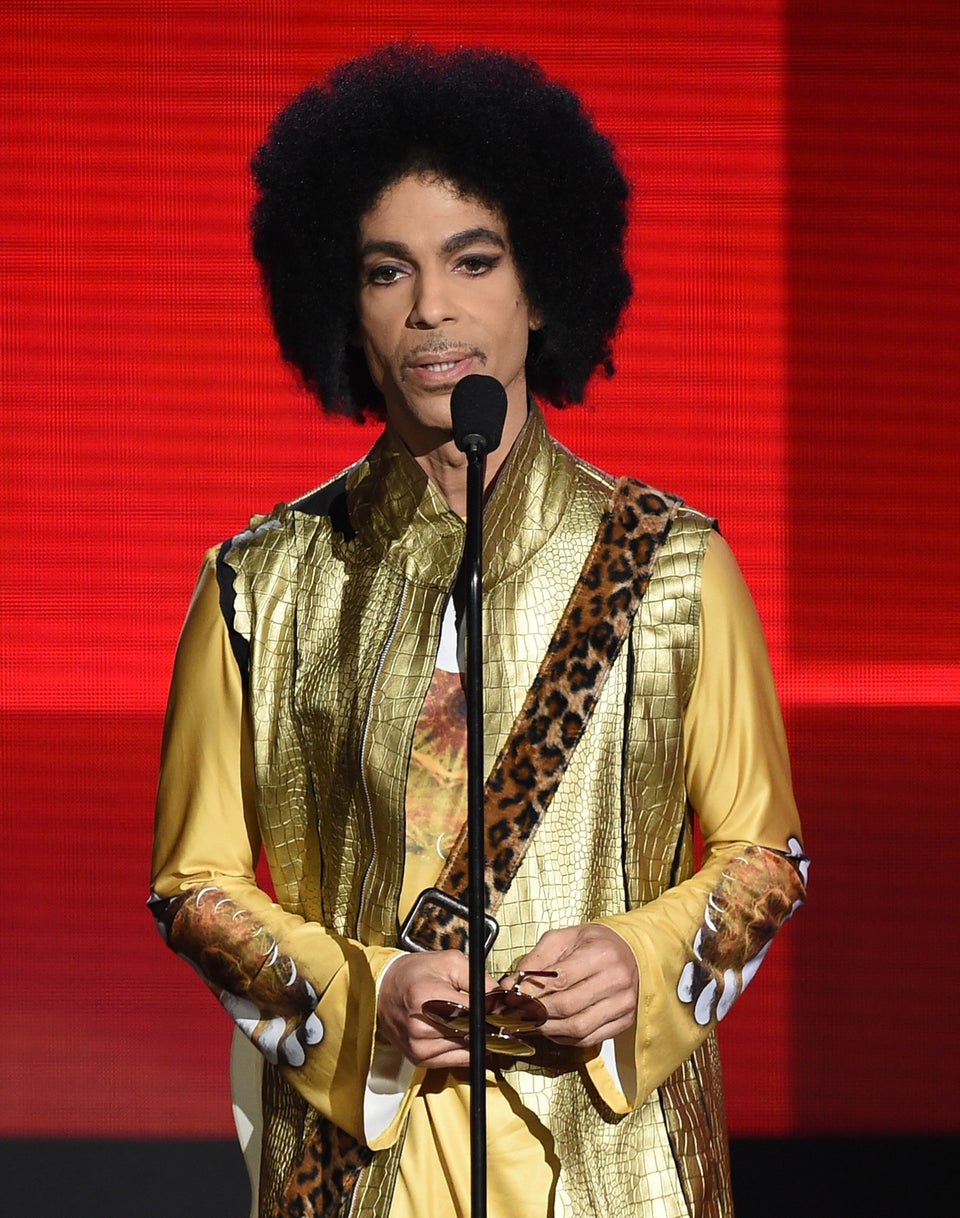
If you’re a woman or a queer man who came of age in the mid ‘90s, there’s a pretty good chance you worshipped at the piano bench of Tori Amos at one time or another.
The musical prodigy, who began composing songs at the age of two and a half, has spent the last 25 years confronting the patriarchy, challenging organized religion and sharing her experiences with love and loss, thereby earning herself a legion of fans whose cult-like devotion is the envy of other musicians.
2016 marks the 20th anniversary of the release of Amos’ “Boys for Pele,” an album inspired by a crushing breakup, as well as classical music (the harpsichord is featured on several tracks) and classical mythology (the title name checks the Hawaiian goddess of fire). It is revered by many as her best work.
The Huffington Post recently caught up with Amos to get her thoughts on “Boys for Pele” two decades after its release and learn more about John Lennon’s ghost visiting her in an Arizona hotel room.
You wrote 35 songs for “Boys for Pele,” but only 18 of them made it onto the album. Even if you take into account all of the B-sides that you released during that era, it seems like there must be some songs that have never made it out of the vault.
There might be a couple, but some things just weren’t finished and some things moved into other songs as the years went on. “Cooling” was being worked on at the time, but then she showed up on the [“From The Choirgirl Hotel,” Amos’ follow-up to “Boys for Pele”] B-sides. We had to respect that, even though she was coming out of the “Boys for Pele” era, she made more sense coming out during “Choirgirl.”
Are there any songs that appeared on later albums that started as unfinished nuggets during the “Pele” era?
There were things that were happening — “Snow Angel,” which ended up on “Midwinter Graces,” began in 1995. “Snow Cherries From France” is really a song from “Pele” that is called “Lady Jane.” The thing about “Lady Jane” is that she started off as a certain type of story with a woman that I had met who was inspiring it and then it got caught up in other Janes that I met in my life. I tried to make it about all the lovely Janes in my life. That song got put by the wayside for a while and shifted into “Snow Cherries From France.”
Fans have been begging you to release the song “To The Fair Motormaids Of Japan” for 20 years, and now you finally have. It definitely feels like it would have fit on “Pele.” Is it exactly as you recorded it?
Yes. We didn’t use the bass line that was there because when we were listening back we thought it needed to be just piano and vocals — that was the intimacy it needed. When it came to releasing the B-sides for “Pele,” we added bass on some things that we hadn’t on the originals — when I say “added,” I mean we had it already and decided to use it. We didn’t record anything new for this release. We mixed “Motormaids” because it hadn’t been mixed, but we didn’t add any instrumentation — it’s just me singing it at that time.
Why did it take you so long to release it?
I don’t know — that’s a really good question [laughs]. This is the upside and the downside of being in the producer’s chair. Sometimes you make a choice that you think is the right choice at the time but it might be for the wrong reasons — it might be because it’s too close to the bone or you just think, “I don’t know if I want this out right now because of how personal this is.” But I’m happy that we had it to put out because it was a nice little surprise, like, “Oh! There it is!”

I’ve heard you tell a story about the song “Hey Jupiter” and how you were on tour and you woke up in a hotel room and a man — a ghost — was sitting on the edge of your bed singing you those lyrics. Some people have concluded that the ghost was John Lennon, based on comments you’ve made over the years. Can you officially confirm that?
I haven’t had a lot of ghosts come and talk to me in my life. Freddie [Mercury] sang me “Sugar” [a B-side off of Amos’ first album, “Little Earthquakes”] all those years ago. And yes — that’s right about [Lennon and “Hey Jupiter”]. That’s right. I was in Arizona at a really low point on the “Under the Pink” tour and everything was kind of just imploding. Eric [Rosse, Amos’ ex, a producer on her first two solo albums and the inspiration for many of the songs on “Boys for Pele”] and I had just split up, Mark [Hawley, Amos’ current husband and sound engineer] and I weren’t together — we were working together professionally, so we said “hello,” but that’s it. So there was a time when I was up to all kinds of stuff and in your life, sometimes you’re exploring and you’re trying to figure out who you are — where do you fit in within the circle at the fire with your contemporaries and your friends and other people that you might be attracted to, but really, do you really want to go off and have kids? Probably not a good idea [laughs]. Or you ask yourself, “Are you both too similar? Are you both too different that you’re going to different galaxies — not just planets — different galaxies?” So, at that time, I think after having been in a relationship for a long time and making “Under the Pink” together, Eric and I had gone our separate ways early on in the tour, and it was many, many, many months out there doing a lot of shows. I had deep questions and this voice came to me and “Hey Jupiter” was pretty much all sung to me — “Are you gay? Are you blue? Thought we both could use a friend to run to” — it was like a lullaby being sung to me from the other side. Some of the lyrics — the “lifting up her dress” — I didn’t need any help with that bit [laughs]. But yes, yes, that’s all true.
Bob Ludwig, who mastered “Boys for Pele” and remastered it for this new release, told you that this was “the record of your career.” Twenty years later, how do you feel about that statement and how did you ― and do you ― continue making new music when someone declares you’ve already made your most seminal work?
I think he understood that because we created it more like a classical recording that it wouldn’t be locked into tricks — because the body of it is harpsichord and piano and not necessarily the latest gadgets, it had a timelessness about it. You can say that about a lot of records. You can say that about certain Stevie Ray Vaughan records. You can say that about certain Johnny Cash records — certain things aren’t so dependent on, “Oh, this signifies a particular time because everybody was using this kind of keyboard or everybody was using autotune.” Now people think that singers sound like autotune because they don’t know what singing sounds like without it. Teenagers are growing up not realizing, “No! That’s somebody fixing them because they can’t sing!” But then you try and imitate autotune not realizing what you’re doing and it becomes a thing and then everybody uses it for a while and then you recognize it — “Oh! That’s that sound from that very specific time.”
“I needed to find my own expression of fire and confront the things I need to confront. I needed to not live through other people.”
- Tori Amos
True. Twenty years later, “Pele” sounds unlike anything else anyone has ever recorded.
Yes — for good or for ill. I mean, I realize there’s some bloodletting on it and I realize it’s hard to listen to, but this is why calling forth the goddess Pele was so important. I needed to understand fire and my own fire and to investigate the dark goddess — not to try and investigate the shadow self like some of my male contemporary friends were investigating. I respect what they were doing — I respect the path they were exploring, from Trent [Reznor] to Marilyn Manson to Maynard [James Keenan] from Tool. What a lot of those artists were exploring was control and trying to release themselves and I think that’s where I resonated with a lot of those guys — as artists and as friends. When we met in the early ‘90s, we were trying to break out of being in controlling situations, whether it was being told what to do artistically or by our record companies or whatever else. That was really the affinity and similarity that I had with them, but where I got it wrong and had to figure it out was that I needed to go and embrace the fact that I’m a piano player — that’s what I do. I’m not a guitar player. I needed to find my own expression of fire and confront the things I need to confront. I needed to not live through other people.
When you speak of “bloodletting,” it makes me think of something you said in 1996: “I had to write ‘Boys for Pele’ in order to even walk outside of my house. My breakup for me was the shattering of a fantasy or a dream.” And then just last month you said, “There’s an anger on this record and a bloodletting that hadn’t happened previously.” I think the reason that so many people really feel like this album speaks to them is because of that bloodletting and that anger. Do you think you ever would ― or even could ― go to a place like that again to make another record?
I’ve gone to that place. I think there are other places for me to go. I think there’s a place for me to go regarding the idea of death being on the horizon and not being completely petrified by it, but also not having hubris about it. When you’re 33 [Amos’ age in 1996], you cannot be looking at death on the horizon unless it’s a tragedy. But when you’re past midlife, you’re getting closer so it’s more of a reality — it isn’t something you’ve heard about that can only tragically happen. It’s something we’re all careening toward. But how we approach it is the question, and I think it’s a very different type of album to explore than it is to confront the patriarchy. I think you’re beyond confronting the patriarchy when you’re talking about the cycle of life — death and rebirth and what does rebirth mean? That’s a really important kind of exploration to have and it can be scary because we’re not seeing people resurrect physically in front of us. That isn’t what’s occurring. We don’t really know where people go — where their souls go when they leave the planet. I do think that would be a different subject matter to look at.
Is that what you’re working on right now?
I hadn’t thought about it until you just asked that. Maybe I am. I’m working on a new record and maybe that’s in there. Well ... Yes, because I think at 33 when I was writing “Pele” — it’s not about being looked to an age but there is a fecundity and fertility that is happening physically. But you don’t necessarily have the experience of having that physical fertility ripped away or dying from you. And when I say fertility, I don’t mean going and getting eggs from a 28-year-old and carrying them as a 53-year-old — I mean your own. We’re talking about a different sensuality and that experience brings a kind of fruitfulness, but part of that fruitfulness is looking at the life cycle and death cycle.
The remastered deluxe re-release of “Boys for Pele” is available now. For more from Amos, check out her official website.

Hit Backspace for a regular dose of pop culture nostalgia.

